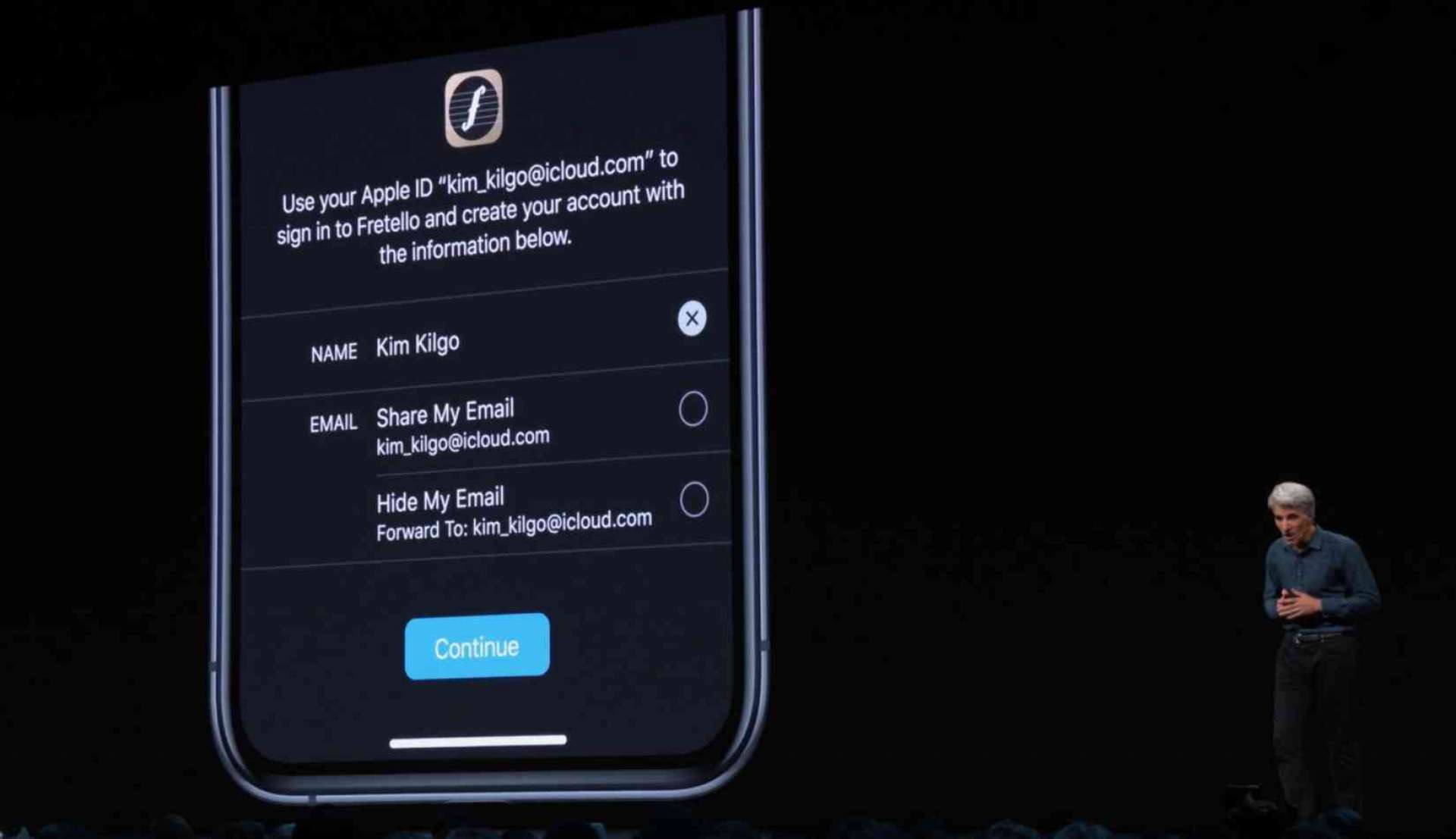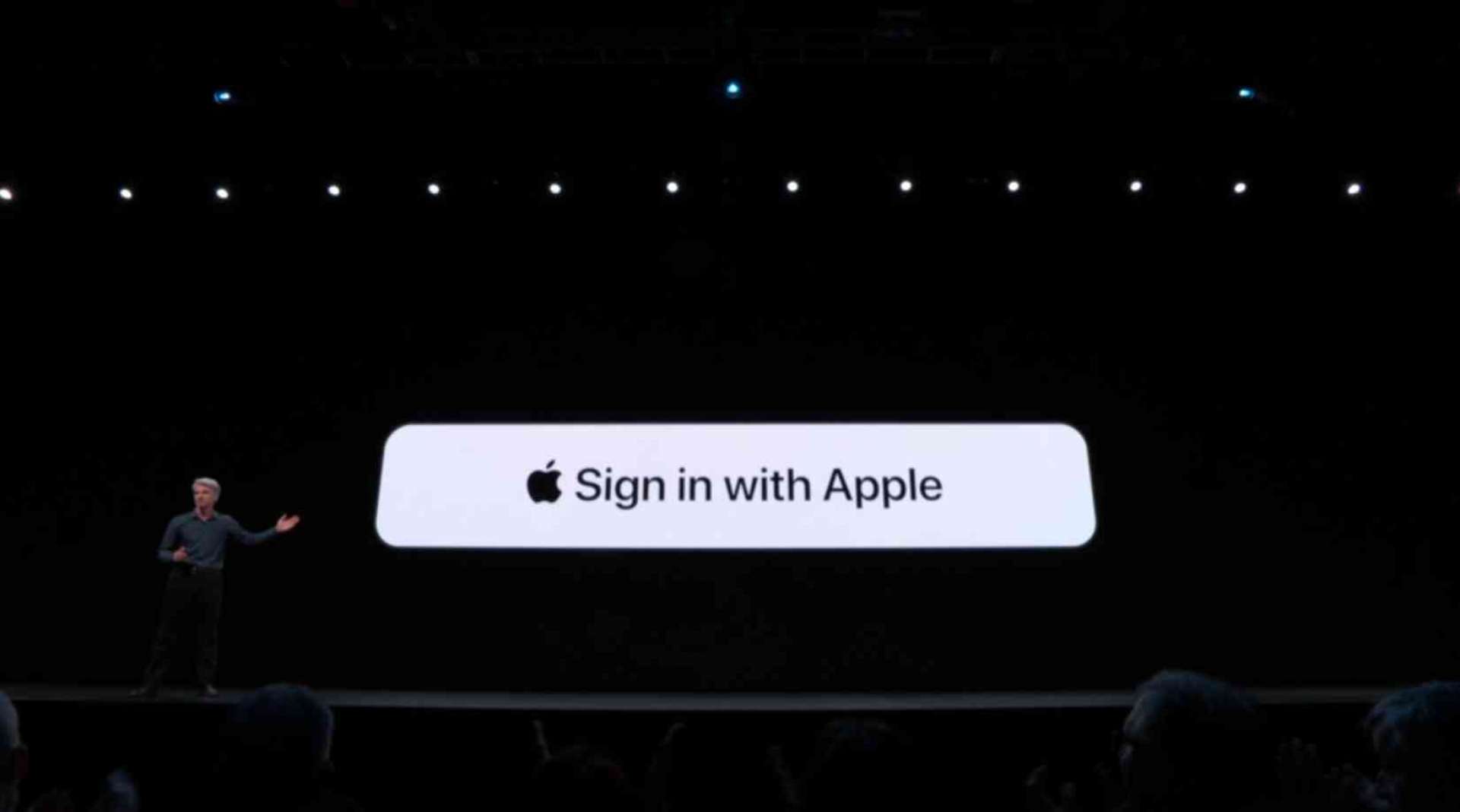Over the last few years, Apple has quietly been moving to curtail the advertising industry's broad reach. It began blocking trackers by default, added ad-blocking to the iPhone, and began restricting cookies in the web browser.
Now, in iOS 13, it's going one step further and focusing on a bigger goal: kneecapping the digital marketing industry entirely, and there’s no way to avoid it.
'Sign in with Apple' is a flagship feature in iOS 13, due to be released in the fall, makes it easier to sign into apps. Just like signing in with Facebook or Google, the idea is that it'll make it easier to create an account in an app without typing out your details—with a key difference: Apple anonymizes the user's email address and identity almost entirely, so the developer never receives their real details.
As a consumer, the idea of Apple sign-in is genuinely an exciting one: I don't have to give out my email address to random companies anymore, helping keep my actual email account much more secure. As a person in digital marketing, as well as a coder and startup founder, the feature terrifies me: Apple wants to remove the last piece of control I actually had over my product's marketing.
But, it's something else that worries me: I don't have a choice. Apple plans to force developers using third-party signin features to add its signin along any competing ones, rather than allowing them to make the choice. Essentially, Apple will force its success—and remove any sort of control from me over whether or not I want to use it.
Rather than competing on merit or features, Apple is backing developers and small businesses into a corner, forcing them to use the technology, and using the App Store—again—as a tool to further its own reach.
Privacy vs marketing

If you've ever worked in marketing or run your own business, you'll know the line between marketing and privacy priorities is incredibly thin. It always has been, and always will be: advertising is a necessary evil that funds ideas and business models that users wouldn't otherwise pay for. But, it's also a crucial part of reaching new customers at every scale.
Generally, to reach new customers, you want to advertise to people like your existing ones–usually by creating something called a ‘lookalike’ audience. Tools like Mailchimp, Google AdWords and Facebook Ad Network allow users to upload email addresses of customers, which are used to understand the type of customer buying your product, and to narrow down advertising to similar people.
The practice usually shocks people outside of the industry, who didn’t realize their email address is used in this way–but it’s a critical part of reaching the right people, rather than blindly paying to target the wrong people, which makes advertising dramatically more expensive.
This is only one example of a practice that uses email addresses to better create advertising for both you and other people, without actually affecting or targeting you. There’s a plethora of other similar methods, often much more complex, but these tools help small businesses broaden their reach–many of them simply couldn’t otherwise reach those customers on their own.
Apple is likely to win consumers over, who think these things sound evil and strange, but without these practices many of our favorite businesses and services simply couldn’t exist or practically reach customers.
Email remarketing, custom audiences and similar tools that rely on a simple email address are particularly important for small online retailers using tools like Shopify or Etsy to sell their items to the right people–they’d otherwise be running ads on Instagram with poor targeting, spending thousands in the hope of reaching the right person at random.
Apple knows this, and that’s why it’s forcing millions of developers to adopt it, rather than convince them to use it. In iOS 13, Apple is requiring its sign-in service to be used if Facebook or Google sign-in are anywhere in their apps.
That way, Apple drives that ad business, and all of the other revenue that comes with it, back to its own platform. To consumers, that might seem great–but it’s a dangerous precedent.
Fighting for privacy—when it pays

Over the last few years, particularly as Facebook's various data scandals played out, privacy has become Apple's largest focus, and where it's put all of its marketing efforts.
Those tools have pushed user privacy forward in many ways, but are designed to further the company's own goals, addressing only competing industries rather than issues on its own platform.
In my first DEBUGGER column for Medium earlier this year, I pointed out this problem: on the web, Apple blocks ads by default and aggressively controls or reveals trackers. On its own platform, however, apps are free to use as many trackers and ads as they like—because there's no way to see them. Apple uses the guise of privacy, which is a legitimate concern for all of us, to disadvantage a platform that competes.
With Apple sign-in, the company is set to do the same thing: by selling the tool as a privacy-focused feature, the company is building a new identity system that it owns entirely. Because it is a powerful privacy feature, it makes it hard to debate this move in any constructive way–personally, I think we need more tools like this, just not from the very platforms further entrenching their own kingdoms.
Apple sign-in is the ultimate lock-in, along with everything else new we’ve seen this year, from an iPhone-only credit-card, to a plethora of exclusive subscription services, only available on Apple’s own hardware. Apple sign-in seals that deal, binding users to Apple's hardware for the long haul, making it tedious to log in to services on any other device (there is support for web logins, but it's poorly documented and notably omits the "seamless login" line shown on every other page).
All of the largest tech companies have switched gears to this model, including Google, and now sell a narrative that nobody can be trusted with your data–but it’s fine to give it all to them, instead.
There’s bitter irony in Apple denouncing other companies’ collection of data with a sign-in service, then launching its own, asking that you give that data to them, instead. I definitely trust Apple to act with my interests at heart today, but what about tomorrow, when the bottom falls out of iPhone sales, and the math changes?
I’m not arguing that any of these advertising practices are right or wrong, but rather that such a hamfisted approach isn’t all that it seems. The ad industry gets a bad rap–and does need to improve–but allowing a company that has a vested interest in crippling it to dictate the rules by forcing developers to implement their technology is wrong.
Yes, we need better tools to understand how we’re being tracked. But, forcing apps around the world to have less control over their own destiny, and access to their customers will harm businesses in profound ways–and make it more expensive than ever for them to reach new customers.
It could, quite literally, be the beginning of the digital marketing apocalypse. This feature, and the way it’s being forced on developers, is a fantastic example of why companies like Apple and Google should be broken up: it’s clearly using the App Store, and its reach, to force the industry’s hand in its favor–rather than compete on merit.
During WWDC, it leaked that the Department of Justice plans a probe into Apple, Alphabet and other technology giants–and these types of land-grabs are prime examples of manipulating users. If the App Store operated independently, outside of Apple, it would be forced to actually convince developers and businesses to use this service, which is the definition of fair competition.
The ad industry needs fixing, yes, and these types of tools are powerful ideas–in the right hands. I’m terrified of running into the open arms of the world’s richest company, leveraging its platform to lock you into its grasp even further.

